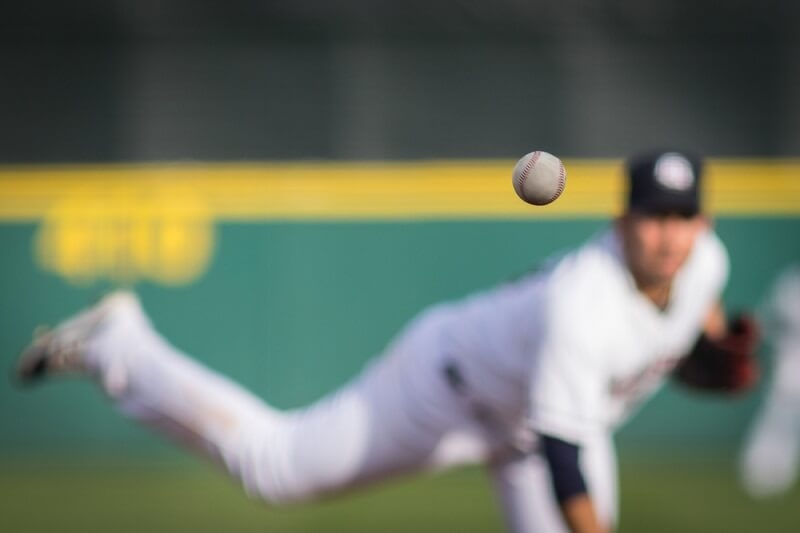
Close
Softball, a beloved sport enjoyed globally, is often seen as baseball's close relative, yet it stands out with its unique characteristics. Played on a smaller diamond with a larger ball, it's accessible to people of all ages and skill levels. Central to understanding softball is recognizing its two primary forms: slowpitch and fastpitch. While they share the foundational rules, each offers distinct gameplay dynamics, making softball versatile and appealing to a wide audience.
In the realm of softball, pitching stands as a defining element that differentiates the two main types: fastpitch and slowpitch. Fastpitch is characterized by its distinctive windmill-like motion, where pitchers harness a full circular arm movement to release the ball, achieving speeds that can surpass 60-70 mph. This technique demands precision and agility.
On the other hand, slowpitch adopts a more relaxed approach. Pitchers use a half-windmill motion, releasing the ball in a high arc that ranges between 6 to 12 feet, resulting in considerably slower speeds. Both styles require unique skills, making each game variant intriguing in its own right.
Bunting, a strategic move in softball, involves holding the bat in the path of the oncoming ball without swinging, allowing it to lightly touch and redirect the ball. In fastpitch softball, bunting is a crucial tactic. Given the high speeds of pitches, a well-executed bunt can catch the defense off-guard, advancing runners or even securing a base hit. It's a play that demands quick reflexes and sharp judgment, often used to capitalize on the defense's positioning.
Conversely, in slowpitch softball, bunting is not permitted. The rationale behind this is twofold. Firstly, given the slower, arcing pitches, bunting would be too easy, potentially disrupting the balance of the game. Secondly, infielders in slowpitch often position themselves further back due to the power hitters and the trajectory of the ball, making it unsafe for them to rush forward to field a bunt.

The act of stealing bases introduces an adrenaline-pumping dynamic to softball, a sport that, while distinct, often draws comparisons to baseball for beginners due to its foundational similarities. In Fastpitch, players enjoy more freedom in this aspect. They can make daring dashes to the next base, capitalizing on the pitcher's focus and the catcher's reaction time. The game's fast pace and the strategy involved in base running make every steal a thrilling event.
However, slowpitch softball imposes more restrictions on stealing bases. The slower nature of the pitch and the game's relaxed pace means that players often can't leave their base until the ball has been hit. This restriction ensures a fair balance between offense and defense, preserving the game's strategic depth.
Fastpitch softball, mirroring its baseball counterpart, fields a team of nine players. This setup includes the essential positions: a pitcher, a catcher, four infielders, and three outfielders. The alignment is strategic, catering to the game's rapid pace and the need for a tight defense against the swift pitches and hits.
In contrast, slowpitch softball introduces an additional player, totaling ten on the field. This variation sees an extra outfielder added to the mix. The rationale behind this adjustment is the game's unique pitching style. With the ball delivered in a high arc, batters often hit lofty flyballs. The added outfielder ensures better coverage of the field, making it more challenging for batters to find gaps and enhancing the game's defensive strategies.

The distance from the pitcher's mound to home plate is a pivotal aspect that differentiates fastpitch from slowpitch softball. In fastpitch, the distance can range from 35 to 43 feet, depending on players' ages. Younger players typically start at the shorter distance, while experienced players pitch from the longer range. This distance is designed to challenge batters with the high-speed pitches characteristic of the fast pitch.
In slowpitch, the distance extends to 50 feet. This adjustment is primarily due to the ball's arcing trajectory in slowpitch, giving batters more time to observe and react.
The varied pitching distances also address safety concerns. In slowpitch, the ball's slower speed combined with powerful swings can send it rocketing back towards the pitcher. The extended distance offers pitchers slightly more reaction time, reducing the risk of injury. Additionally, these distances cater to the distinct gameplay dynamics of each format, ensuring competitive balance and strategic depth.

In fastpitch softball, catchers are armored with full protective gear. This ensemble includes a facemask, chest protector, and shin guards. Given the velocity and movement of fastpitch deliveries, this equipment is crucial to safeguard catchers from potential injuries, especially when dealing with stray pitches or foul balls.
Conversely, slowpitch softball catchers often wear minimal gear. A face mask is typically the primary protective equipment, with some catchers opting to stand further back from the batter for added safety. The reduced gear is reflective of the game's slower pace and the decreased risk posed by the lofted pitches. However, safety remains a priority, and catchers are always encouraged to use gear that ensures their protection on the field.
Fastpitch softball, drawing parallels with baseball, traditionally consists of 9 innings. This structure is designed to challenge teams over a longer duration, testing their stamina, strategy, and adaptability. Given the high-speed nature of the game, with swift pitches and rapid transitions between innings, the nine-inning format ensures a comprehensive contest, allowing teams ample opportunities to strategize and overturn deficits.
In contrast, slowpitch softball is played over 7 innings. This reduction is primarily due to the game's more relaxed pace. With slower pitches and potentially longer innings, especially given the increased likelihood of hits and runs in slowpitch, a seven-inning format ensures that games don't become overly prolonged. It strikes a balance between providing enough gameplay while maintaining the interest and energy levels of both players and spectators.
You may also like: The Top Baseball Mistakes You Could Make While Playing
The pitching speeds in fastpitch and slowpitch significantly influence the scoring dynamics. In fastpitch, the high-speed pitches, combined with the game's strategic depth, often result in lower-scoring games. Batters struggle to react quickly to fast, spinning balls and scoring runs.
Slowpitch, with its arcing, slower deliveries, generally sees higher scores. Batters have more time to judge and hit the ball, leading to more frequent base hits and runs. However, the added outfielder in slowpitch can counteract this advantage, adding a layer of defensive strategy to the game.
At a glance, the field dimensions for both fastpitch and slowpitch softball appear quite similar. Both games are played on diamonds with bases, a pitcher's mound, and outfield areas. The core layout remains consistent, ensuring that players transitioning between the two formats find familiarity.
However, nuances arise when considering gameplay, especially when comparing it to baseball rules. For instance, in slowpitch, due to the high number of flyballs resulting from the slow, arcing pitches, outfielders might position themselves differently compared to fastpitch. Additionally, infielders in slowpitch might stand further back, anticipating powerful hits. These subtle shifts in positioning, influenced by the game's rules and dynamics, highlight the strategic depth embedded in softball. Regardless of the format, understanding the nuances between baseball rules and softball, along with the right strategy, honed skills, and appropriate equipment, are crucial for success on the diamond.
Softball, in its varied forms of fastpitch and slowpitch, offers a rich tapestry of strategy, skill, and excitement. Whether you're drawn to the rapid dynamics of fastpitch or the calculated play of slowpitch, the game's essence remains rooted in teamwork, adaptability, and passion. Dive in and embrace the softball spirit!
This content was created by AI